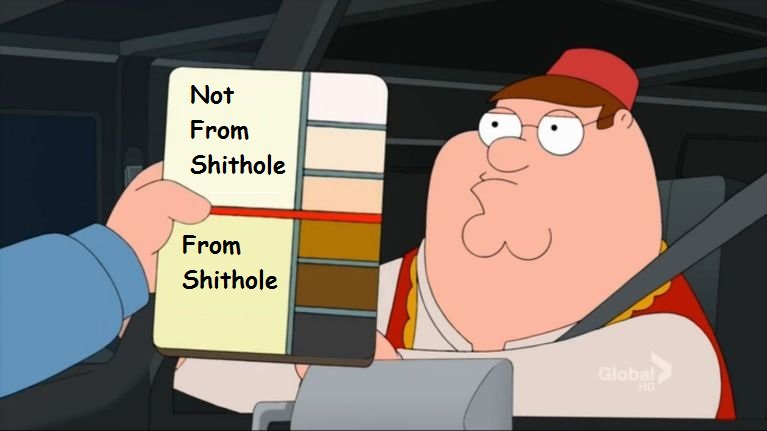The Daily Escape:
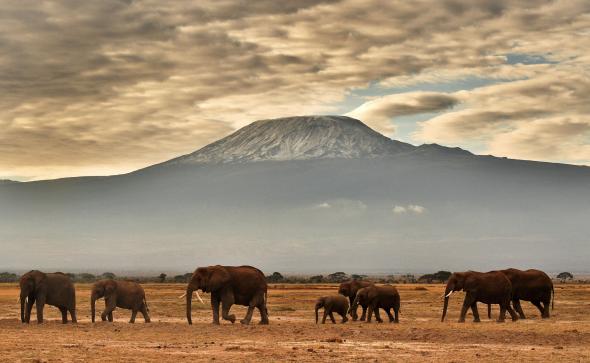
Elephants on the march, Kenya – photo by Carl De Souza
There is a poaching boom all across Africa. Economic development in Vietnam and China has fueled a $70 billion industry of killing elephants and rhinoceroses for their tusks. Poachers illegally hunt elephants and rhinos under the cover of darkness using surveillance equipment and high-tech weaponry. The local park rangers are spread thin across the vast territory the animals call home, and have very little that they can do at night, when much of the poaching occurs.
The boom in poaching has contributed to a 9000% increase in rhino killings since 2007 in South Africa alone. Across Africa, two rhino are slaughtered every day and an elephant is killed every 14 minutes:
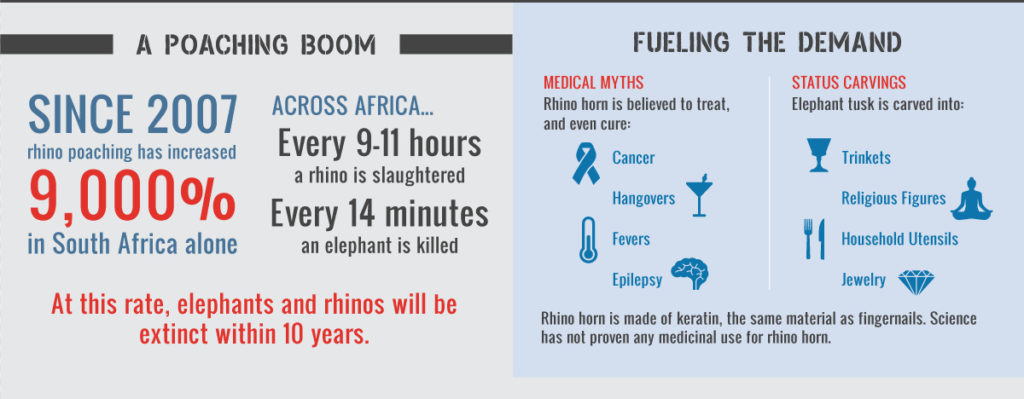
Source: Air Shepherd
According to Air Shepherd, a wildlife conservation group using a new drone system that deploys Artificial Intelligence to target poachers, there were 1.3 million elephants in Africa in 1979. By 2007, there were less than half that number. This is the route most often used by poachers:
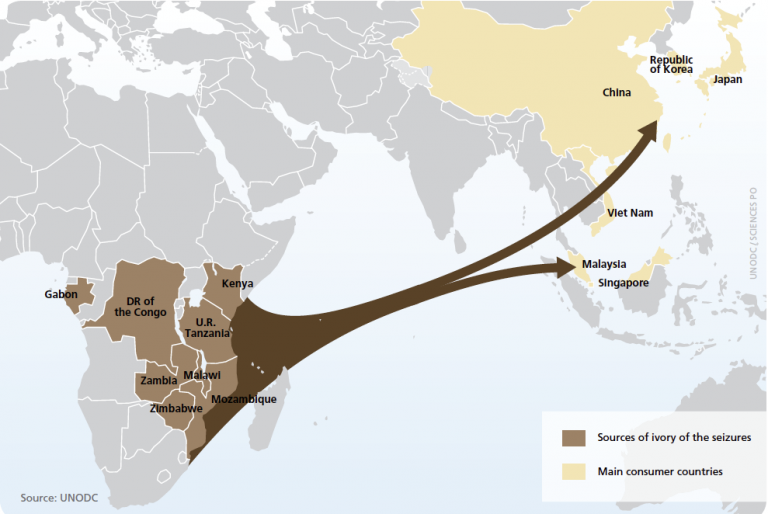
Air Shepherd has conducted 6,000 flight hours over the skies of Africa testing its new AI drone system. Their drones use high-tech airborne sensors, such as thermal infrared imaging to detect heat coming from humans or animals. The drone’s mobile command center fits into the back of a van, and uses AI systems developed by researchers from Carnegie Mellon, USC, and Microsoft to detect potential poachers.
Across Africa, park rangers in each country patrol vast amounts of land searching for poachers, but only perform limited night operations. The Air Shepherd’s AI drone can supplement the on-the-ground efforts, and greatly expand the area of coverage. It will help protect wildlife by spotting poachers and alerting officials, hopefully before the killing of an elephant or rhinoceros occurs.
The big question is how will the illegal poachers, who are on the front lines of a $70 billion industry respond to the threat of drones? Certainly they will try to develop countermeasures. Let’s start with the idea that drones fly slowly enough to be shot down by rifles.
The drones may be helpful, but they are merely a Band-Aid for the problem. Economics tells us that the fewer elephants there are, the more the ivory of still-living elephants will be worth in the Asian marketplace. The costs of poaching must rise to the point that many of today’s Chinese and Vietnamese buyers can no longer afford to buy the product. Still, human greed and avarice have already driven many species to extinction, so the solution may remain elusive.
The African countries involved could offer a bounty on poachers. But that solution ignores the human rights of poachers. Some might say that poachers give up their human rights by killing an animal for its horn. Maybe the solution is to re-brand poachers as “terrorists”.
If the animals are worth more alive than dead, then locals will work together to protect them. In some cases, rhinos live on protected reserves and can be “farmed” once their population is stabilized. Here is a photo taken in 2006 by Wrongo on one such reserve in South Africa:
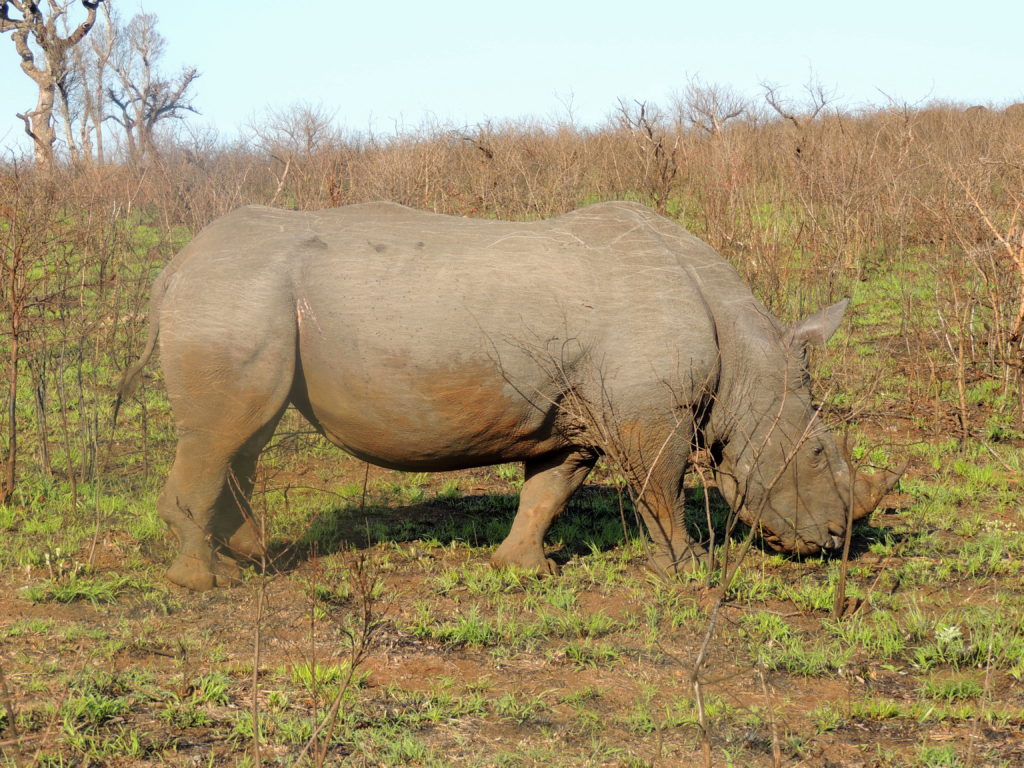
Last June, Wrongo wrote about a different effort by US military veterans to help South African Rhinos.
Elephants are much more difficult to farm, since they migrate very long distances, and can easily break through fencing. What may help is that China has just established a ban on ivory sales. China announced in late 2016 that it would cease taking part in ivory processing and sales by March 31, 2017, and would cease all ivory processing and sales by December 31, 2017. The ban does not apply to Hong Kong, which will consider a sales ban early in 2018. Some sources say that the China trade has declined, but Malaysia has started to take China’s place in the illegal trade.
The US banned ivory imports in June 2016.
Many ideas are directed at solving the problem, but we’ve seen little progress so far.


